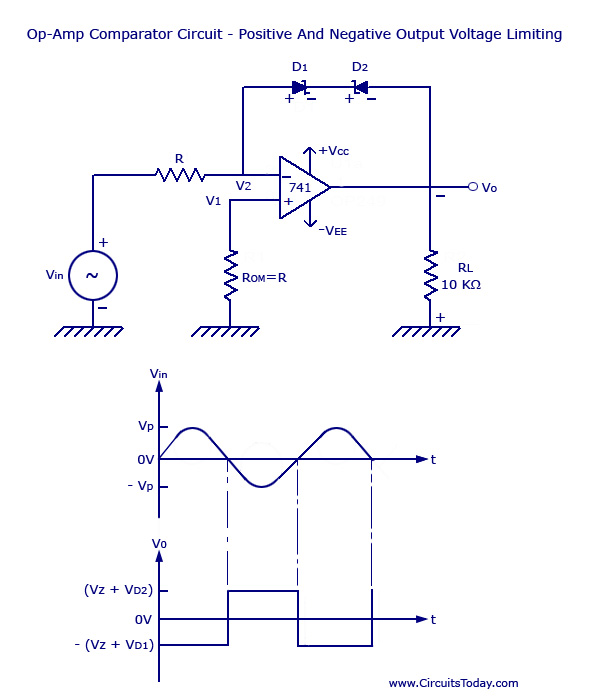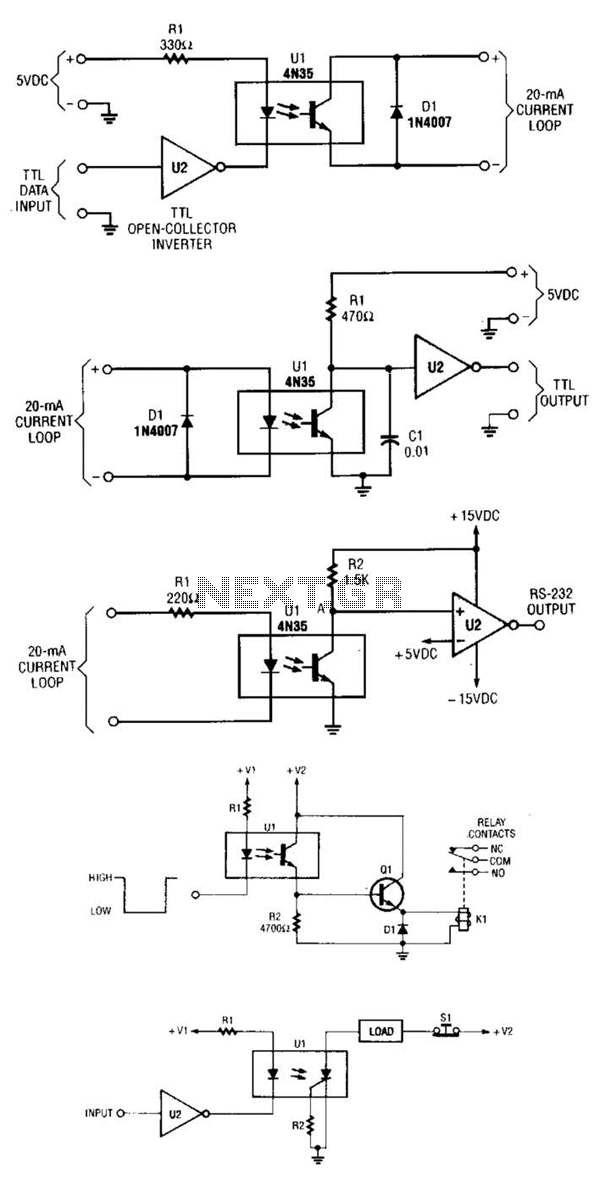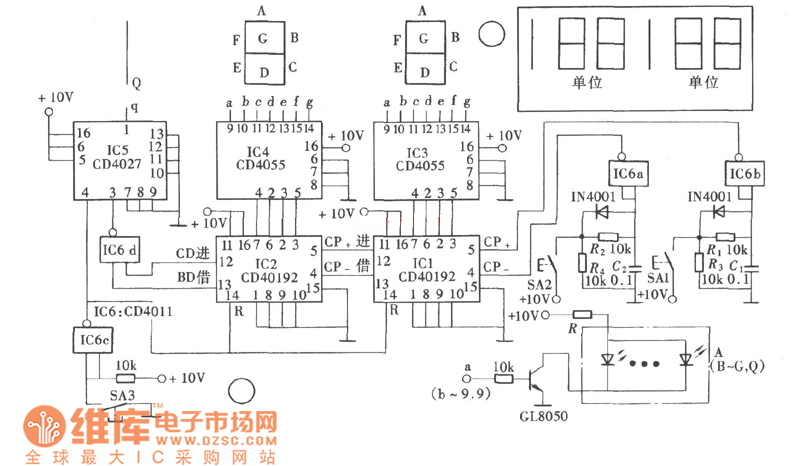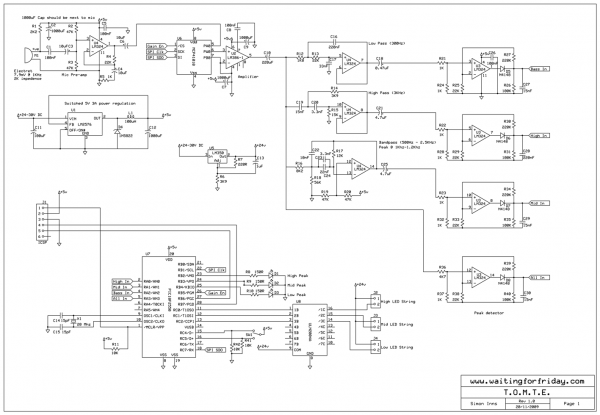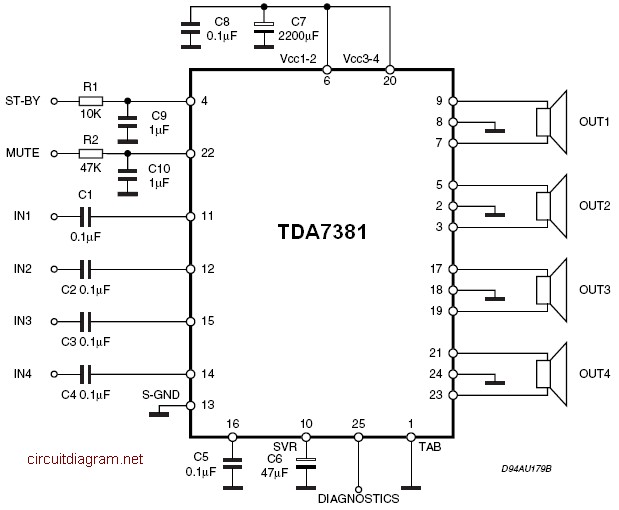
7900 series three-terminal fixed negative output voltage regulator circuit
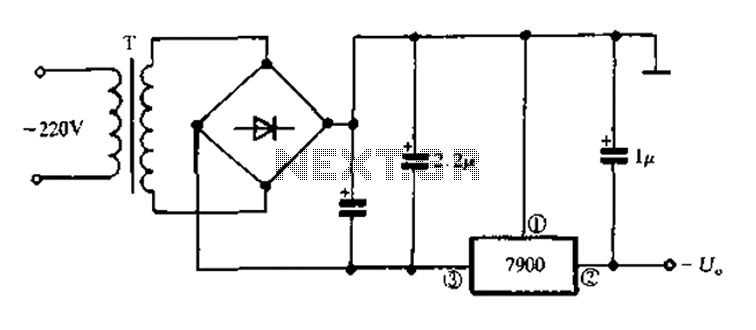
7900 series three-terminal fixed negative output voltage regulator circuit
The 7900 series comprises a range of three-terminal fixed negative voltage regulators designed to provide stable output voltages. These regulators are specifically engineered to deliver a consistent output voltage, which is pivotal in various electronic applications requiring reliable power supply management.
The typical configuration of a 7900 series regulator includes three pins: input, output, and ground. The input pin connects to the unregulated negative voltage source, while the output pin delivers a regulated negative voltage to the load. The ground pin serves as a reference point for the output voltage.
Common output voltages available in the 7900 series include -5V, -12V, and -15V, making them suitable for various electronic circuits that require negative voltage supplies. The devices are designed to handle input voltages up to -35V, ensuring compatibility with a range of power sources.
The internal architecture of the 7900 series regulators typically includes a thermal shutdown feature, short-circuit protection, and a safe operating area, which collectively enhance the reliability and safety of the circuit. Additionally, these regulators can provide output currents up to 1A, depending on the specific model, making them versatile for different load requirements.
To utilize a 7900 series regulator in a circuit, it is essential to connect appropriate input and output capacitors to stabilize the voltage and improve transient response. A typical application circuit may include an input capacitor (e.g., 0.33 µF) placed close to the input pin and an output capacitor (e.g., 0.1 µF) near the output pin. This configuration minimizes voltage fluctuations and enhances performance under varying load conditions.
In summary, the 7900 series three-terminal fixed negative voltage regulators are integral components in power management systems, providing reliable and stable negative voltage outputs for a variety of electronic applications. Their robust design and ease of integration make them a popular choice among engineers and designers in the field of electronics.7900 series three-terminal fixed negative output voltage regulator circuit
The 7900 series comprises a range of three-terminal fixed negative voltage regulators designed to provide stable output voltages. These regulators are specifically engineered to deliver a consistent output voltage, which is pivotal in various electronic applications requiring reliable power supply management.
The typical configuration of a 7900 series regulator includes three pins: input, output, and ground. The input pin connects to the unregulated negative voltage source, while the output pin delivers a regulated negative voltage to the load. The ground pin serves as a reference point for the output voltage.
Common output voltages available in the 7900 series include -5V, -12V, and -15V, making them suitable for various electronic circuits that require negative voltage supplies. The devices are designed to handle input voltages up to -35V, ensuring compatibility with a range of power sources.
The internal architecture of the 7900 series regulators typically includes a thermal shutdown feature, short-circuit protection, and a safe operating area, which collectively enhance the reliability and safety of the circuit. Additionally, these regulators can provide output currents up to 1A, depending on the specific model, making them versatile for different load requirements.
To utilize a 7900 series regulator in a circuit, it is essential to connect appropriate input and output capacitors to stabilize the voltage and improve transient response. A typical application circuit may include an input capacitor (e.g., 0.33 µF) placed close to the input pin and an output capacitor (e.g., 0.1 µF) near the output pin. This configuration minimizes voltage fluctuations and enhances performance under varying load conditions.
In summary, the 7900 series three-terminal fixed negative voltage regulators are integral components in power management systems, providing reliable and stable negative voltage outputs for a variety of electronic applications. Their robust design and ease of integration make them a popular choice among engineers and designers in the field of electronics.7900 series three-terminal fixed negative output voltage regulator circuit
